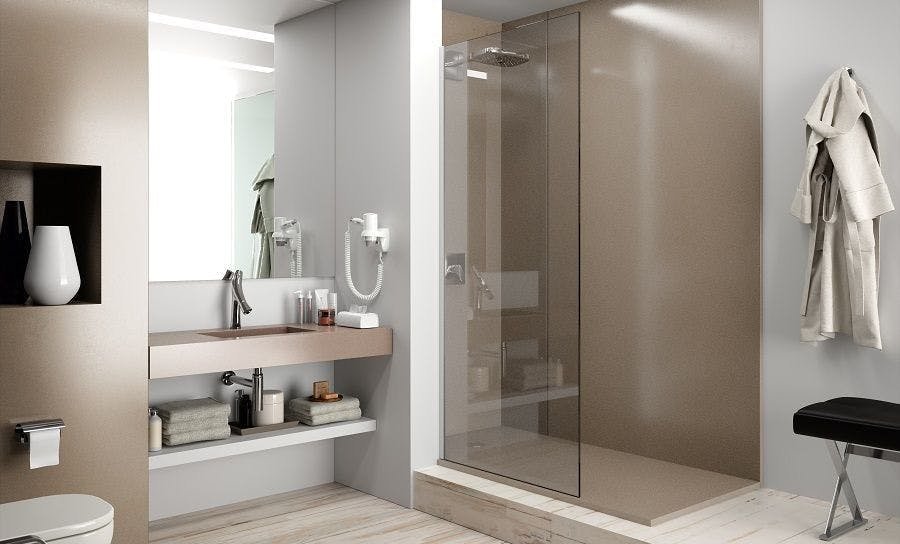Do you want to renovate your bathroom? We give you 5 ideas
One in three individuals renovates their bathroom every 5 years to improve its functionality, according to a study. We summarise the most common recommendations when it comes to renovating the bathroom.

Replacing the bathtub with a shower, a classic way to renovate the bathroom
In families with children, when they get older, it is common to consider replacing the bathtub with a shower, as a daily shower saves water. It is a classic when it comes to renovating the bathroom. And also as the bathroom users get older, they adapt it so that the passage to the bathtub is not an obstacle (although they can also opt for the more accessible bathtub models, which have a door practically at ground level). The fact is that replacing these sanitary fixtures also usually means gaining space, as a shower tray can be limited to just 75 x 75 cm, while bathtubs are 70-75 x 140 cm. More advantages? It is a quick and easy job.

Rethinking the layout in a bathroom renovation
Whether you are going to remove an element (such as the bidet, which is becoming increasingly obsolete), you are going to replace it (as we mentioned, for example, by replacing the bathtub with a shower tray) or it is necessary to redesign the space (changing the bathroom decoration), one of the keys to layout is to make the toilet as invisible as possible. In fact, if the changes are going to gain a few centimetres, it is very convenient to even build a low wall when renovating the bathroom that offers all the privacy needed. In bathrooms with quite a few square metres, you can consider building a cabin to completely separate the toilet. In these cases, to avoid the feeling of claustrophobia, the most appropriate option is a translucent glass door, which lets in light but guarantees the desired privacy.

Renewing the bathroom coverings
The walls and floor of a bathroom will largely determine the aesthetics of a bathroom. Do they look dated? The solution is to install new ones when renovating the bathroom. They can be ceramic, natural stone (bathrooms with natural stone) or even cutting-edge synthetic materials with excellent resistance qualities, such as Silestone or Dekton. In large sections, it is usual for these coverings to be laid straight and sometimes they are also placed diagonally, and in small sections the way of placing them can be more imaginative: in herringbone, staggered (or continuous), in single file… In the budget it is better to specify how they will be laid. Unless, of course, you want a continuous floor (common in industrial and Mediterranean-style bathrooms), and you opt for microcement.

